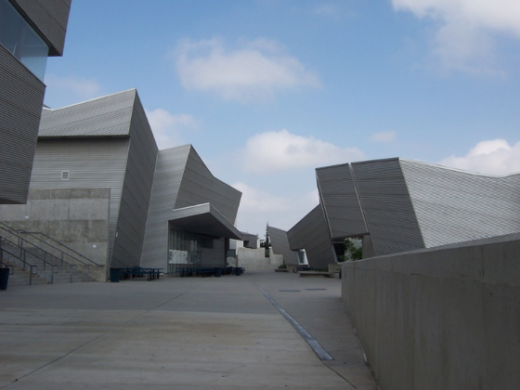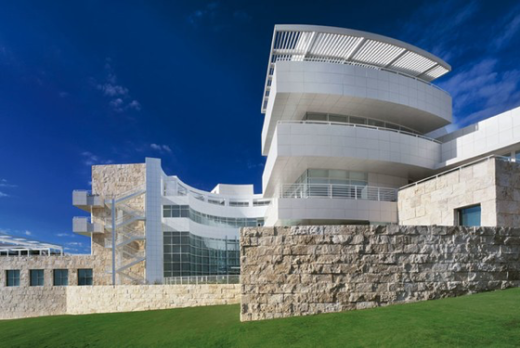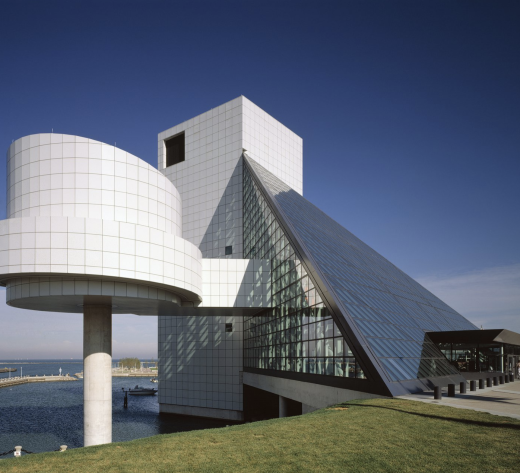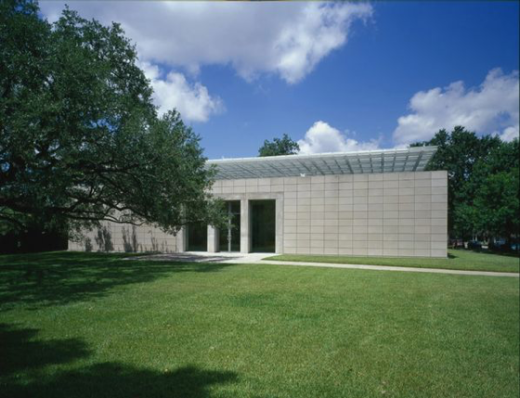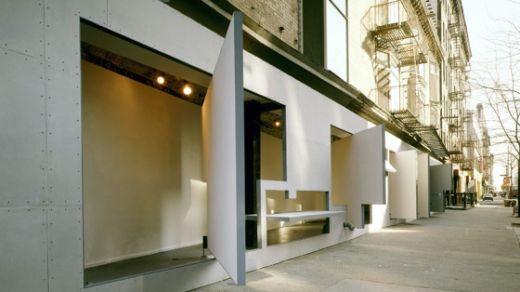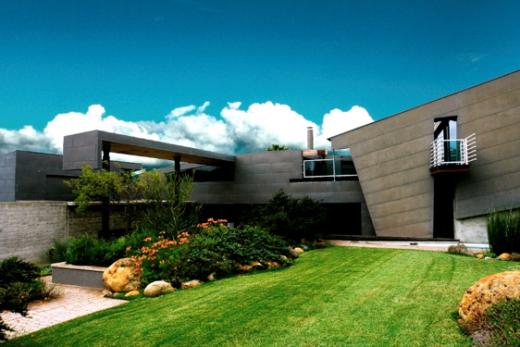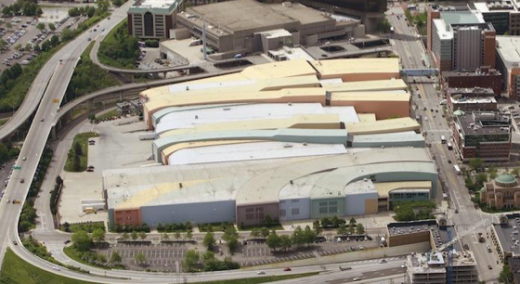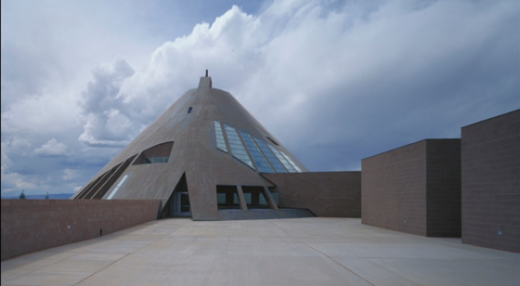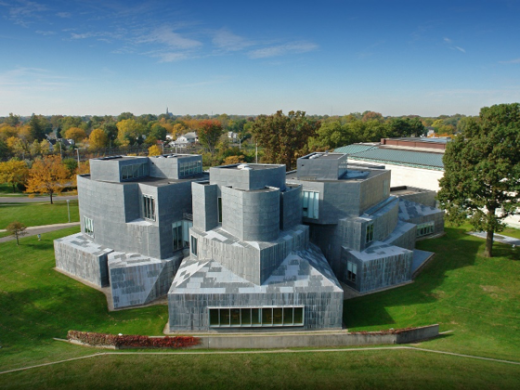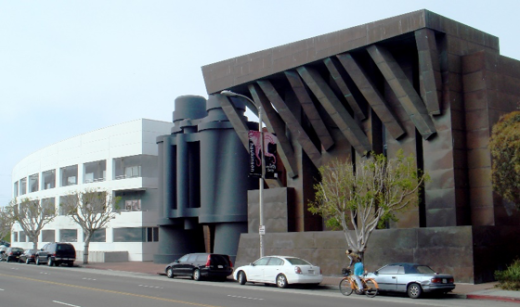“Every era needs its landmarks.” A colleague at the New York City Landmarks Preservation Commission once told me this, while in conversation about Kevin Roche John Dinkeloo and Associates’ UN Plaza Hotel (constructed 1976-83 and designated a New York interior landmark in 2017). There are those buildings that help us understand the path of architecture and its relationship to a particular place, people, and time. When we study their physical characteristics – the way their architects composed their materials, forms, and volumes; drew from or reacted against regional vernaculars; explored new, emerging technologies; and adapted their buildings’ programs in new and innovative ways – we may grapple with changes in the architectural trajectory that we either love or revile, or settle into a conflicted state of both.
It often takes time, and with time historical perspective, to recognize which of the buildings that spring up in a particular era are game changing. There are those iconic buildings that change the course of an architect’s work, and those that are strong enough to change the course of architecture in general.
The American “Modern Movement” has a long tradition of explosive results when ideas either combine or diverge. While originally drawing from European and vernacular precedents, the American Modern architecture tradition produced innumerable regional schools of thought throughout the country linked by adherence to common principles. In recent decades, architecture has departed from this path in exciting ways.
In his article about the 1980 Venice Architecture Biennale, “The Presence of the Past,” architectural historian Charles Jencks identified six departures from Modernism: “historicism, neo-vernacular, adhocism, contextualism, metaphorical and metaphysical architects, and those who develop an ambiguous space.”[i] He argued that these departures were all “partly Modern (because of the tradition from which they depart) and partly Other,” and it is this “double-coding” that unites them.[ii] To his point, they are not a rejection of Modernism, but a departure. I would argue that the architecture of today, at the very essence of its values, forges on within the Modern tradition.
The focus of this essay is ultimately a brief investigation of architecture of the 1990s, culminating in a list of important works of the last decade of the 20th century, so that we might better comprehend the context within which architecture of that era can be understood and evaluated. This essay does not attempt to classify buildings with stylistic labels and checkboxes. Rather, it is a brief exploration of the cultural shifts that made the 1990s a pivotal time in architecture.
The 1990s produced architecture that many of us remember in concept and under construction, and this proximity doesn’t give us much elbowroom for perspective. But with the 1970s approaching 50 years of age, and with ample (and growing) scholarship about late 20th century architecture, shouldn’t we also be identifying the landmarks of the 1990s – while we still have them?
Departures from a shared tradition
Architects and critics have been writing about Postmodernism for over 50 years, from Robert Venturi’s Complexity and Contradiction in Architecture (1966) to more recent works that provide an analysis of the movement with the benefit of historical perspective. Deconstructivism received critical attention in the New York Museum of Modern Art (MoMA) exhibition, Deconstructivist Architecture, curated by Philip Johnson and Mark Wigley in 1988, which focused on the work of seven architects across the globe. In 1995, the MoMA exhibition Light Construction chronicled another divergent path, focusing on works with such lightness of form that they appear intangible and ambiguous. This “architecture of transparency” recalled the work of early 20th Modernists, while being directly influenced by contemporary culture and technology.[iii] However, the architectural movements of the last two decades of the twentieth century have not yet received the kind of scholarly attention afforded to Postmodernism – certainly because less time has passed, and also because these works are highly idiosyncratic and disparate from one another, making them challenging movements to define.
Postmodernism was born out of several ideas. It was a departure from the orderly and mechanistic purity of Modernism with its belief that architecture could be communicative, ornamented, and referential. Postmodern architects used color, historical references, and symbolism in exaggerated and exuberant ways to communicate messages about context and use. Early Postmodern works from the late 1960s were met with critical acclaim and curiosity for their total irreverence to the austerity of Modernism. By the 1970s and ’80s, it had matured into a prevalent American architectural style employed in major commissions of civic buildings, entertainment studios, corporate office towers, and resorts. Its formality, extravagance, and Classical references – though often executed in tongue-in-cheek ways – made it well suited to major institutions wishing to appear firmly established and prosperous.
Meanwhile, another architectural movement was forging a divergent path. Its practitioners rejected Postmodernism as kitsch, overly exuberant, and too “establishment”; instead, they celebrated authenticity of materials and vernacular forms.[iv] This movement had more in common with the High Tech architecture of Foster and Rogers than the precedents of Postmodernism, in that it celebrated the technology and elements of structure. Early Deconstructivist works fragmented common architectural features and reconstructed them in surprising new ways, expressing freedom of form and defying traditional ideas about what a building is composed of. By the 1980s, Deconstructivism was firmly established as an architectural movement of idiosyncratic and unorthodox works that appealed to the avant-garde, who enjoyed its place at the opposite end of the pendulum swing from the corporate successes of Postmodernism.
The 1990s: a recovering economy gives way to a new architecture
The 1990s began in economic turmoil. The real estate boom of the 1980s, which had fostered the overbuilding of commercial office space in American cities, collapsed by the end of that decade and resulted in sinking property values, lowered investment incentives, and unemployment. This, coupled with a loss of consumer and business confidence due to the oil price shock, produced a depressed economy that would last through the first half of the 1990s. According to New York Times architecture critic Paul Goldberger, the early 1990s were defined more by what didn’t get built than by what did, with his assertion that both the worst and best things to happen to architecture in 1990 were “that all the money went away,” referring to some major development projects that would have marred the built landscape had they been constructed.[v]
In addition to economic depression, the early 1990s brought the US invasion of Kuwait and entry into the Gulf War, and domestic upheaval in the form of civil unrest in Los Angeles spurred by the verdicts that acquitted four Los Angeles Police Department officers of assault in the beating of Rodney King. With pervasive uncertainty at home and abroad, American youth were thrown into a new existentialism that found its way into arts and culture, including mainstream music, film, and art. The exuberance and visual excess of the 1980s felt gauche in the 1990s, and there was a new longing for “realness” that had been lost in the 1980s.
Although it isn’t entirely reliable to link architectural trends to specific historical events and trends in the economy, it is difficult to ignore the coincidences. As Philip Jodidio describes it, “a mood or climate is established, and its influence may be so pervasive as to give rise to an aesthetic response.”[vi] It makes sense then, in the climate of the early 1990s, that Postmodernism may have been seen as tacky, and its excesses cringe-inducing, and its corporate successes passé. In the words of Los Angeles architect Craig Hodgetts, “…Postmodernist architecture was about the history of architecture. It didn’t draw on contemporary life, so it severed itself from a source of vitality.”[vii]
In the early 1990s, there were a few major American works constructed in the Postmodern vein -- though most of these were designed in the mid- to late-1980s and weren’t completed until the following decade. However, when the economy began to recover, the buildings of the latter half of the ‘90s conveyed values of architectural movements that had taken root in the 1980s and were, in a new economy and a new era of technological virtuosity, able to mature. In many ways they revisited the core values of early 20th century Modernism, with a focus on regionalism, rejection of applied historical ornament, and relationship to site and culture. More so, however, the 1990s presented an existential approach to traditional building forms and ability to question everything we ever thought we had known about architecture, all of which appealed to the avant-gardism of the era.
Early 1990s works differed visually from those of the 1980s, primarily in their minimalistic leanings as an antidote to visual excesses of the previous decade. By the mid-1990s, however, a more prosperous economy and advances in architectural drafting technologies gave architects the ability to build even the most unbuildable schemes. In their 1990s works, architects played with surface, structure, transparency, and ambiguity of form in ways only touched upon in previous decades. With renewed confidence, developers courted architects for the task of designing individualistic “icons” as urban anchors (consider the “Bilbao effect”; Frank Gehry’s Guggenheim Museum in Bilbao was completed in 1997), and the portmanteau “starchitect” became a household term.
Identifying the “landmarks” of the 1990s
Looking at the works of a particular era and/or architectural movement helps us understand the visual qualities that unite them. As professionals working in the field of historic preservation in the U.S., we’re trained to evaluate works of architecture for their merit in the following ways: do they embody the distinctive characteristics of a type, period, or method of construction, represent the work of a master, or possess high artistic values?[viii] Inherent in this practice is an inclination to classify buildings by architectural style or mode, in order to understand whether a building is a “good” or pivotal example among its peers. We are further guided by the National Park Service to evaluate a building’s character by observing overall visual aspects, building materials, surface finishes, ornament, details, features, and spaces. A compilation of these features may provide a link to a particular architectural idiom.
Modernism in general is vexing for those feeling the pull to classify by architectural style. Its rebellious tendencies and the fact that its architects produced idiosyncratic and individualistic works make it, at times, difficult to ground in context.
However, in a study of significant works of the 1990s, we may begin to understand American Modernism in transition from the 20th to the 21st century. In a future time and place, scholars will discuss 21st century architecture, which is going in new directions as quickly as technology can pave the way. And in this context, it is likely that the 1990s will be seen as one of the most pivotal decades in the history of Modernism.
Because every era needs its landmarks, I’ve provided a list of thirteen existing 1990s buildings that, despite their young age, I would argue meet the eligibility criteria of the National Register of Historic Places. The National Register, which is the U.S. repository of significant buildings, sites, and landscapes, typically limits inclusivity to buildings 50 years or older except in instances were exceptional importance can be established. The following list is not intended to be viewed comprehensive, but is rather a cross-section of buildings from the 1990s that convey the aesthetic values and shifts of the era.
Significant U.S. 1990s buildingsix
(Slide show)

